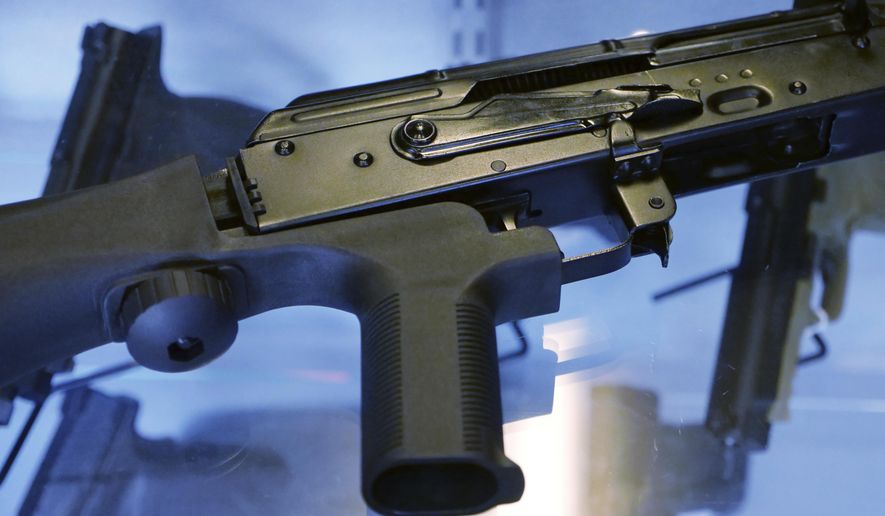A gun owner who lawfully purchased a bump stock years ago has taken his case to the Supreme Court this month, challenging the Trump administration’s 2018 reclassification of the devices as unlawful machine guns that must be destroyed.
W. Clark Aposhian turned over his bump stock — an attachment that enables a semiautomatic rifle to fire faster like a machine gun — to the government under the new regulation, but the bump stock has been in storage pending the outcome of the legal battle.
From 2008 through 2017, bump stocks weren’t classified as machine guns and were allowed to be purchased lawfully. But after the 2017 mass shooting in Las Vegas where an individual using the devices shot and killed 58 people and injured hundreds more at a concert, the Trump administration moved to prohibit them. Twelve of the rifles in the shooter’s possession had been modified with bump stocks.
The new rule, based on federal law defining machine guns and outlawing them from civilian use, required all bump stocks be handed over to the government by March 26, 2019, and destroyed. The administration reasoned bump stocks fall within the definition of machine guns.
It was estimated Americans owned roughly 520,000 bump stocks at the time.
Mr. Aposhian argued in court papers that the lower courts ruled that the Federal Bureau of Alcohol, Tobacco and Firearms is entitled to “Chevron deference,” upholding its bump stock ban, although the government did not assert Chevron as part of its defense.
Chevron deference allows courts to refer to an agency’s interpretation of an ambiguous statute passed by Congress, so long as the agency action is not unreasonable.
Mr. Aposhian is asking the Supreme Court to review his case during the upcoming term after the justices return from their summer recess in October.
“All eight court of appeals judges to review ATF’s bump stock ban without using Chevron deference … have decided ATF’s interpretation of the statute is flat wrong,” said Mark Chenoweth, executive director of New Civil Liberties Alliance, representing Mr. Aposhian.
He said the plaintiff’s case “supplies the Supreme Court with a well-suited vehicle to clarify … aspects of Chevron deference and limit the damage this doctrine is doing to the rule of law. The Justices should seize this opportunity to clarify the law.”
A spokesperson from the Bureau of Alcohol, Tobacco, Firearms and Explosives declined to comment, citing the pending litigation.
Acting Attorney General Matthew Whitaker said in 2018 that the federal government was reclassifying the bump stocks to fulfill former President Donald Trump’s promise to be a law-and-order president.
“We are faithfully following President Trump’s leadership by making clear that bump stocks, which turn semiautomatics into machine guns, are illegal, and we will continue to take illegal guns off of our streets,” he said.
The Supreme Court has batted away challenges to bump stock bans in the past.
One case brought by gun rights activists had also challenged the Trump administration’s move, and was rejected in March 2020. Another case had challenged Maryland’s state ban on bump stocks, which preceded the federal ban, according to The Associated Press.
But Josh Blackman, a professor at South Texas College of Law, said Mr. Aposhian’s case is not focused on Second Amendment rights, but rather it is technical about how much leeway should be given to administrative agencies when they write regulations.
“There is a big circuit split on this issue, so the justices may find it attractive. I think there is a decent shot” the Supreme Court will hear the case,” he said.
It would take at least four of the justices to agree to grant review in Mr. Aposhian’s case.
• Alex Swoyer can be reached at aswoyer@washingtontimes.com.




Please read our comment policy before commenting.